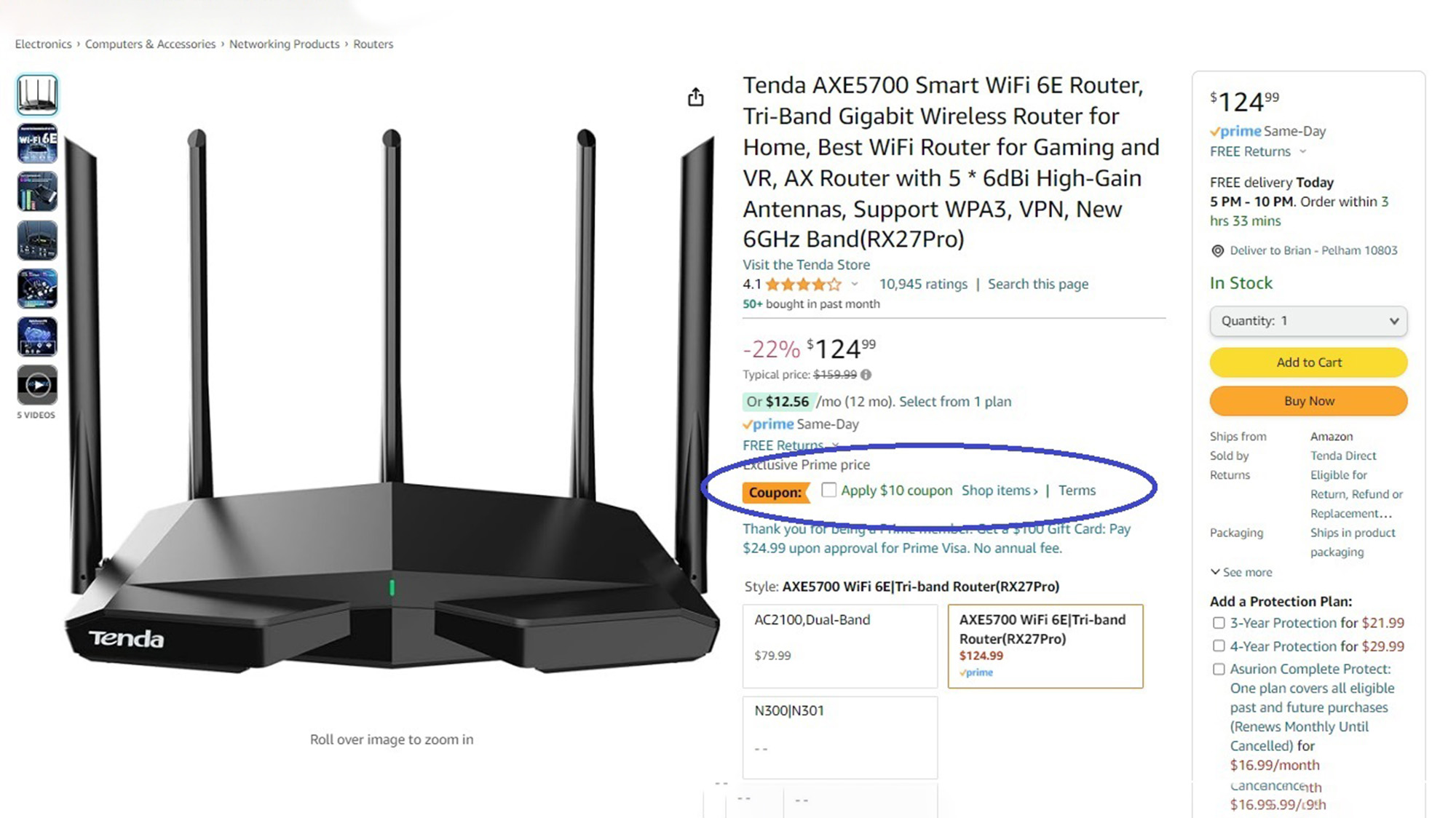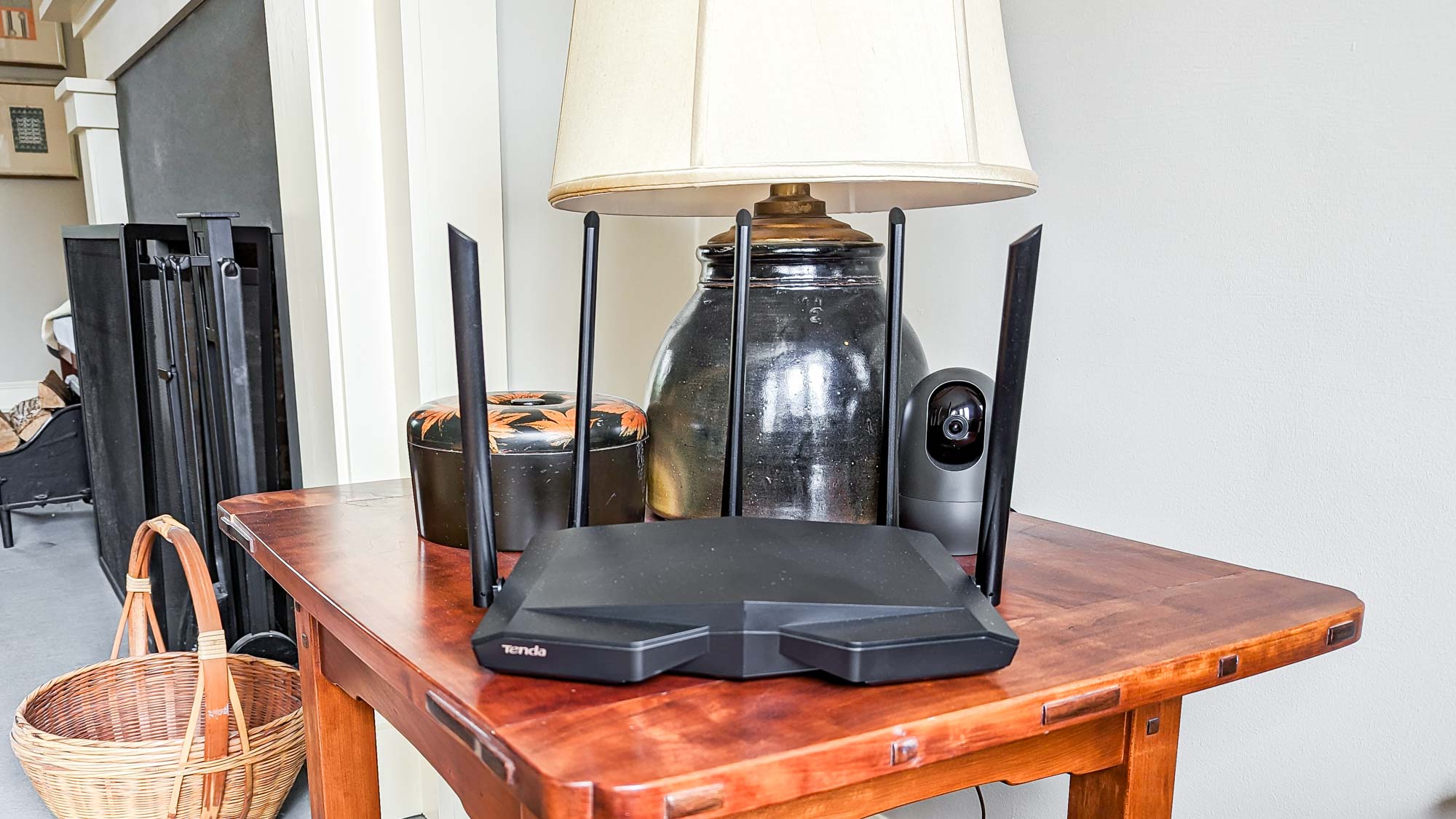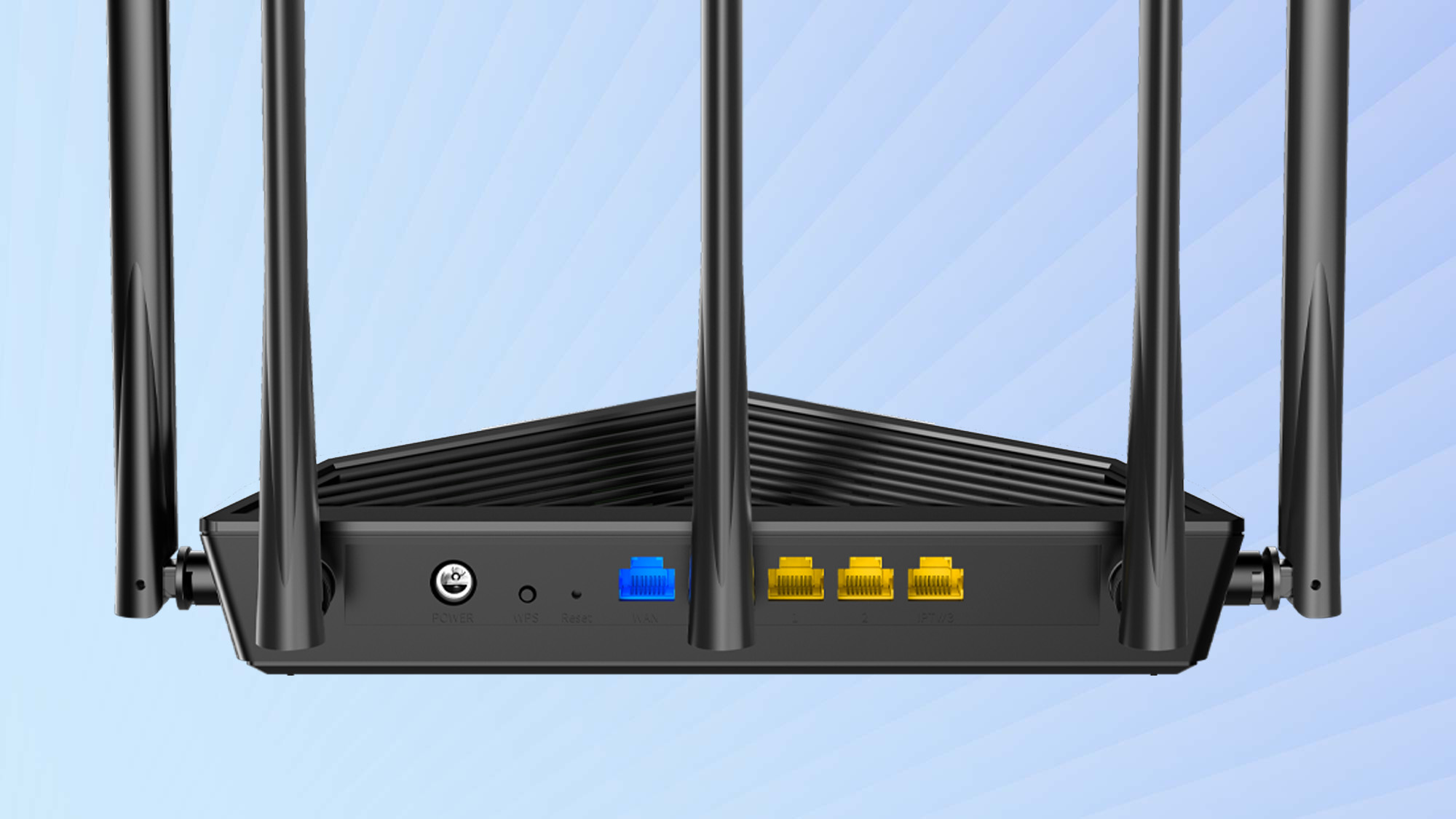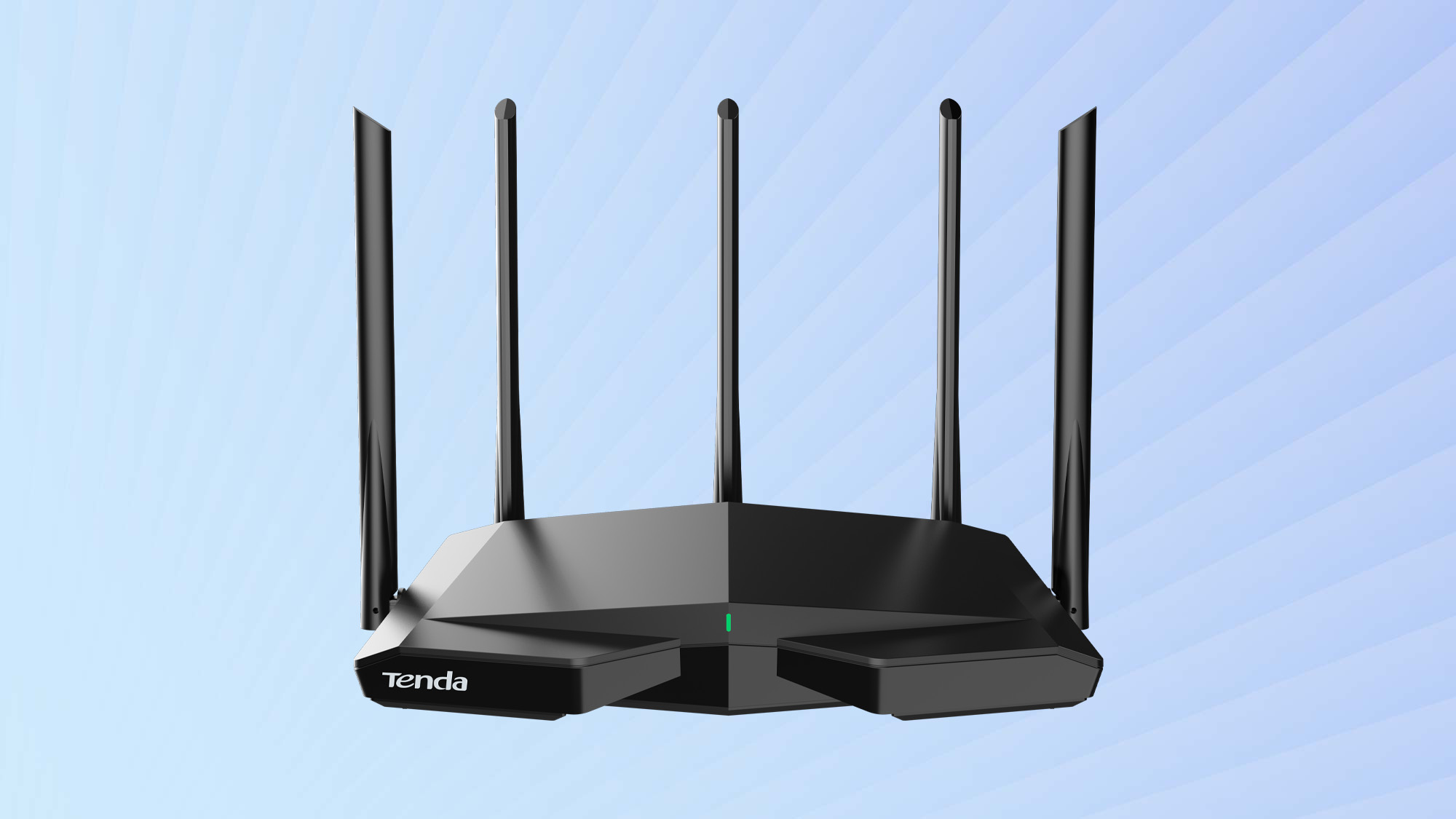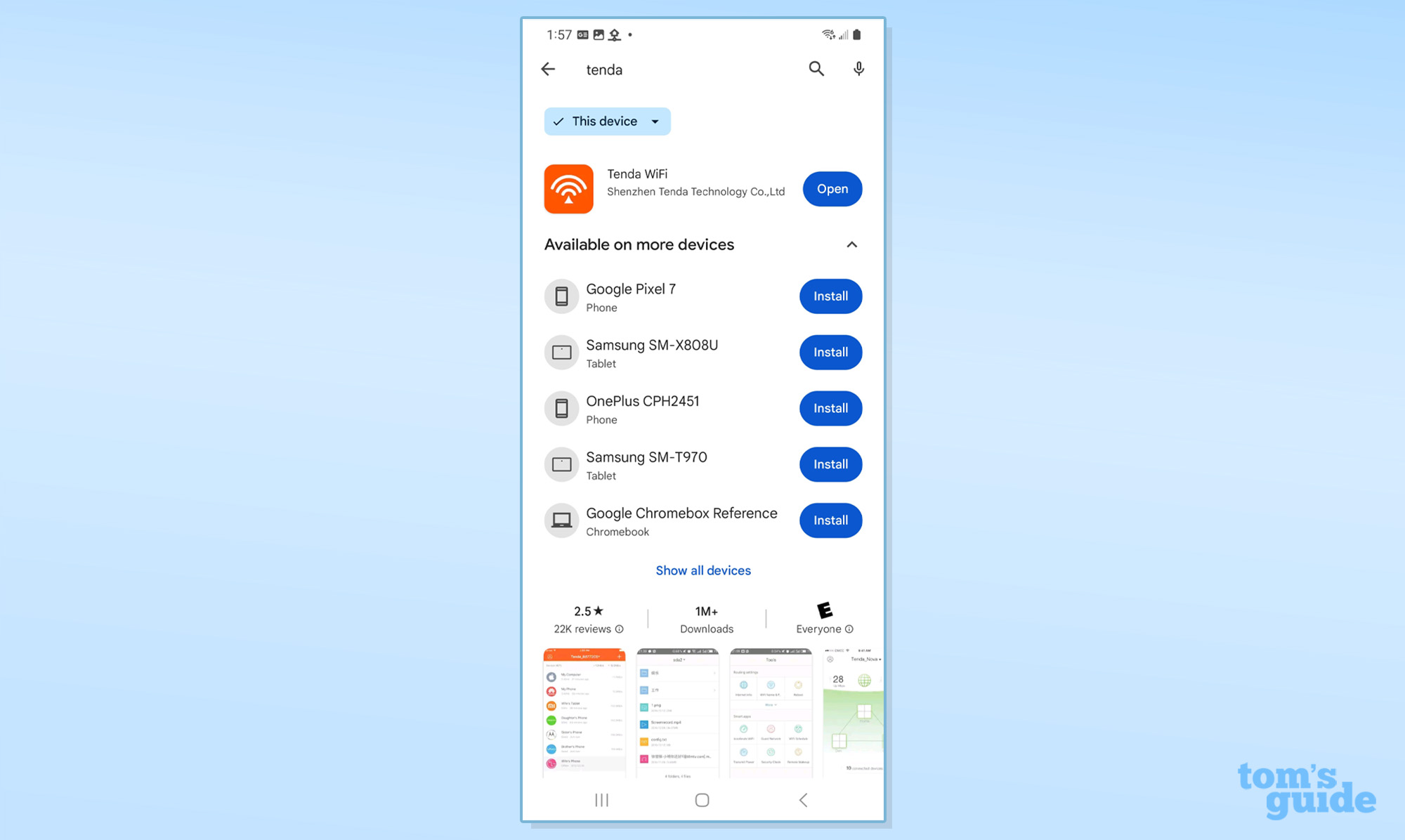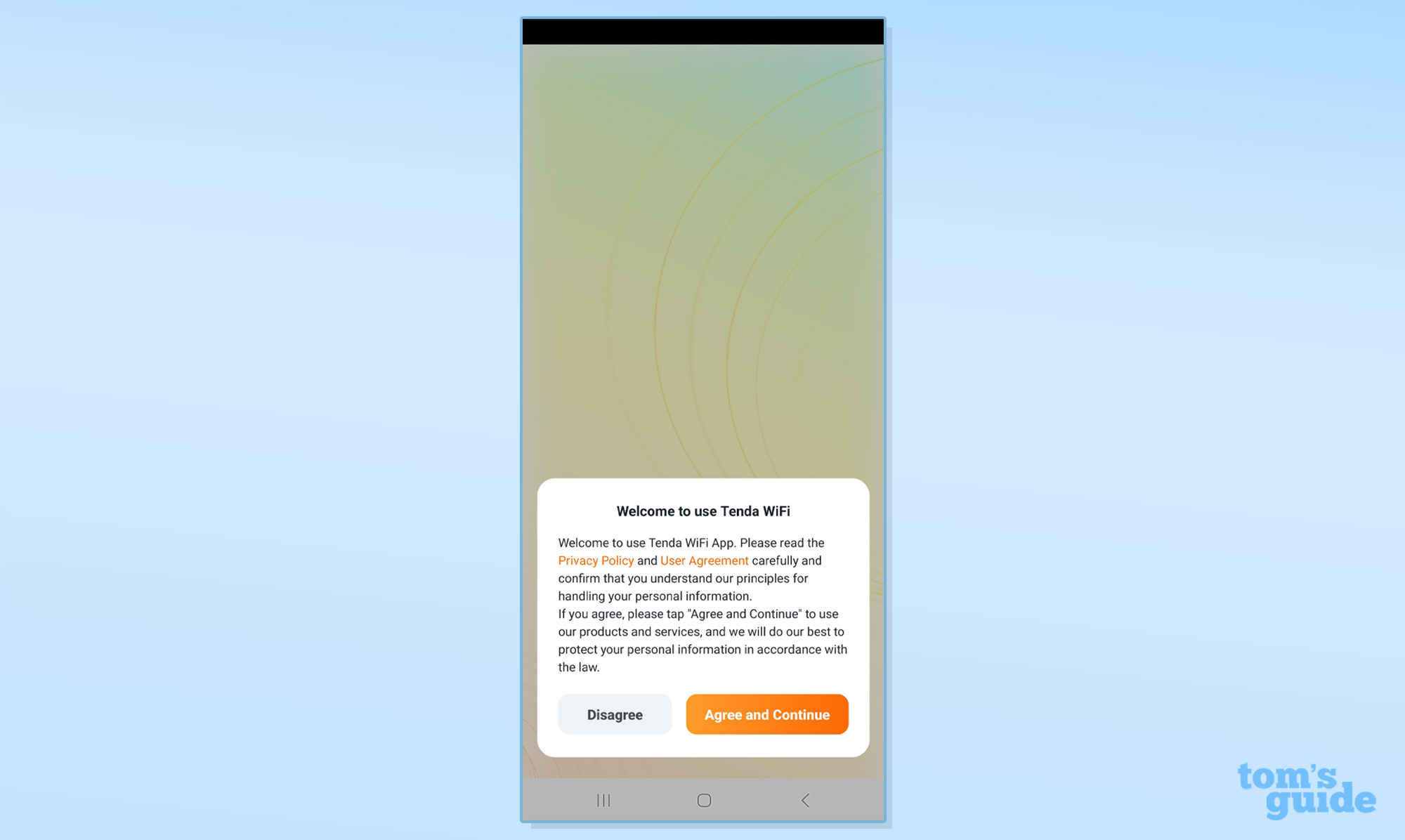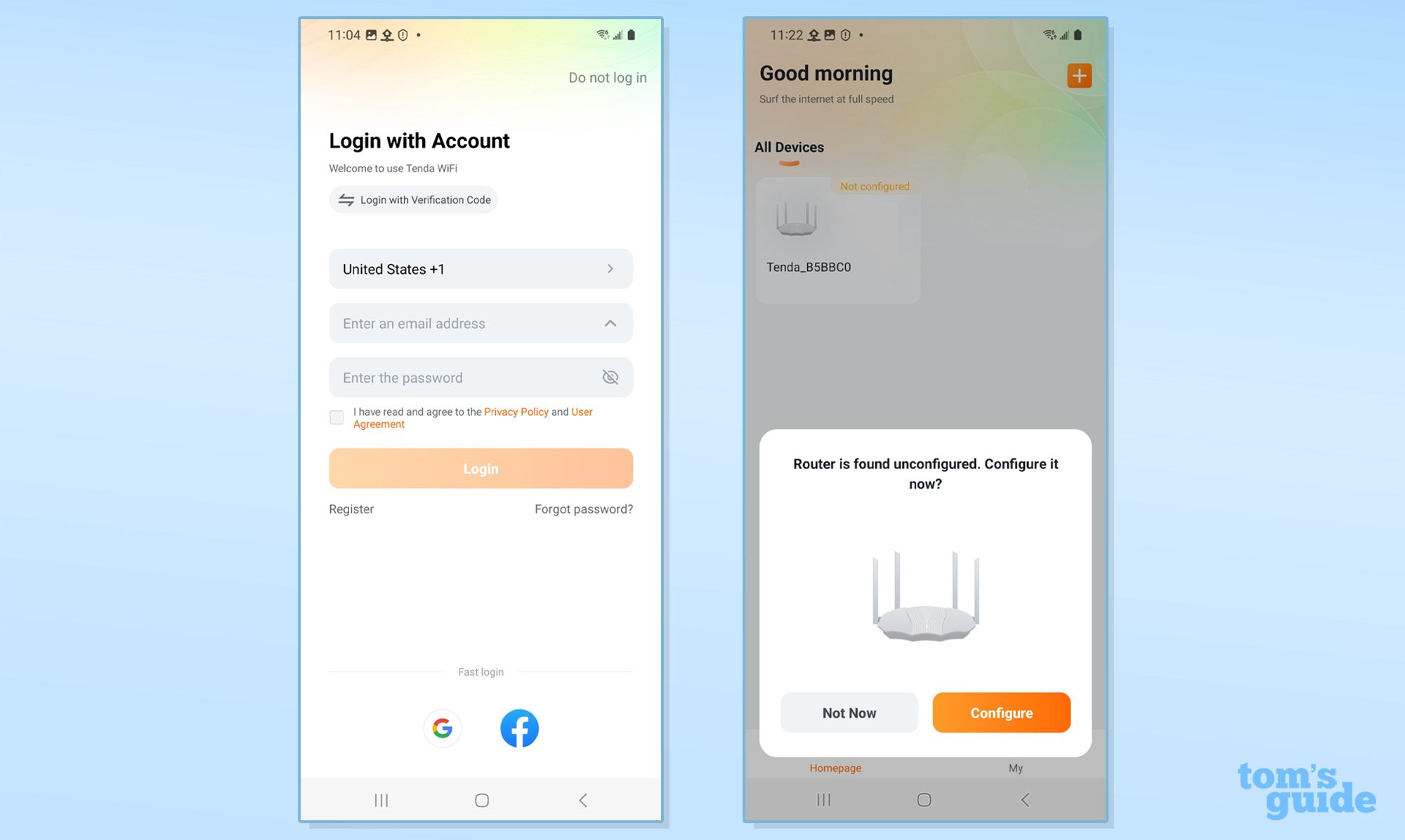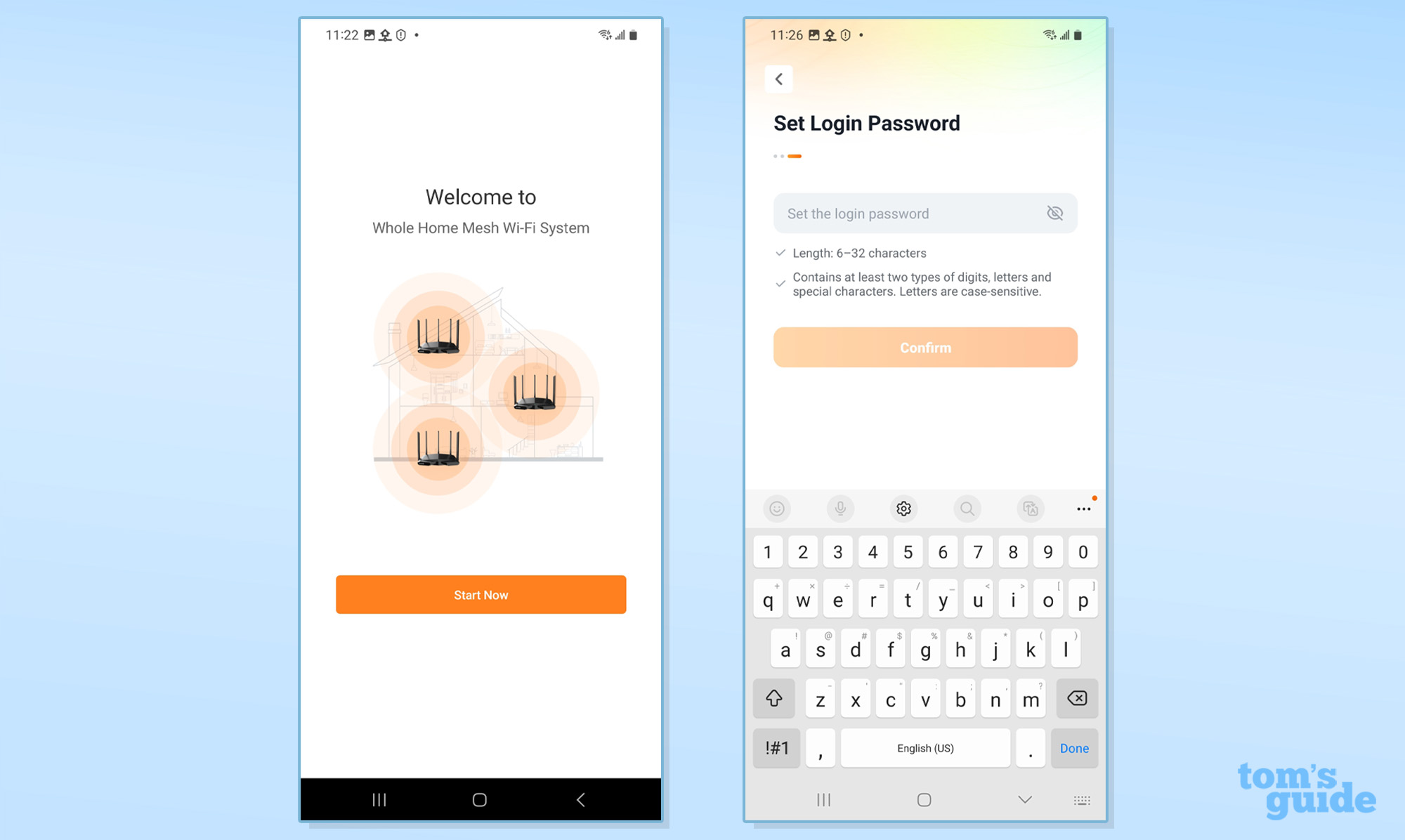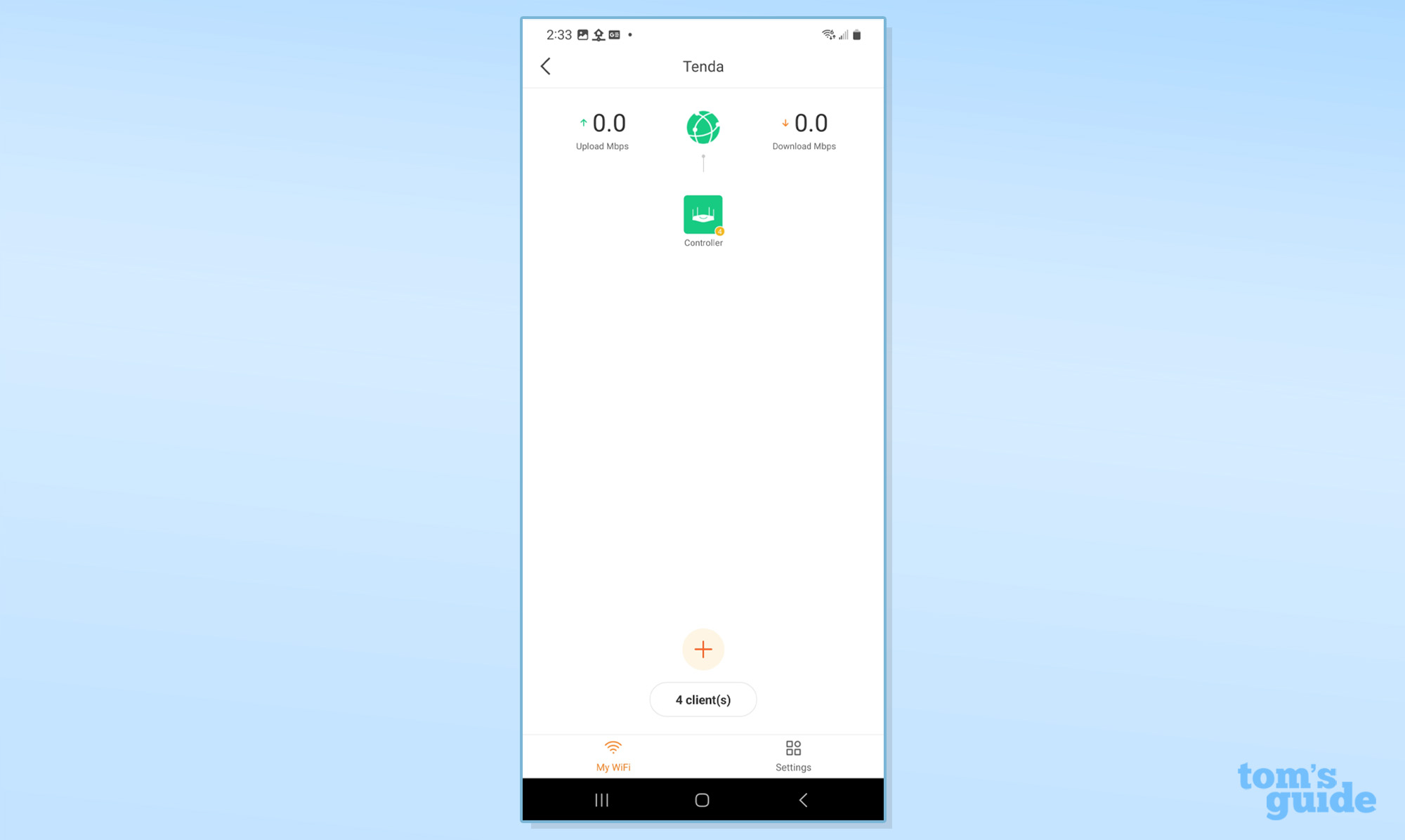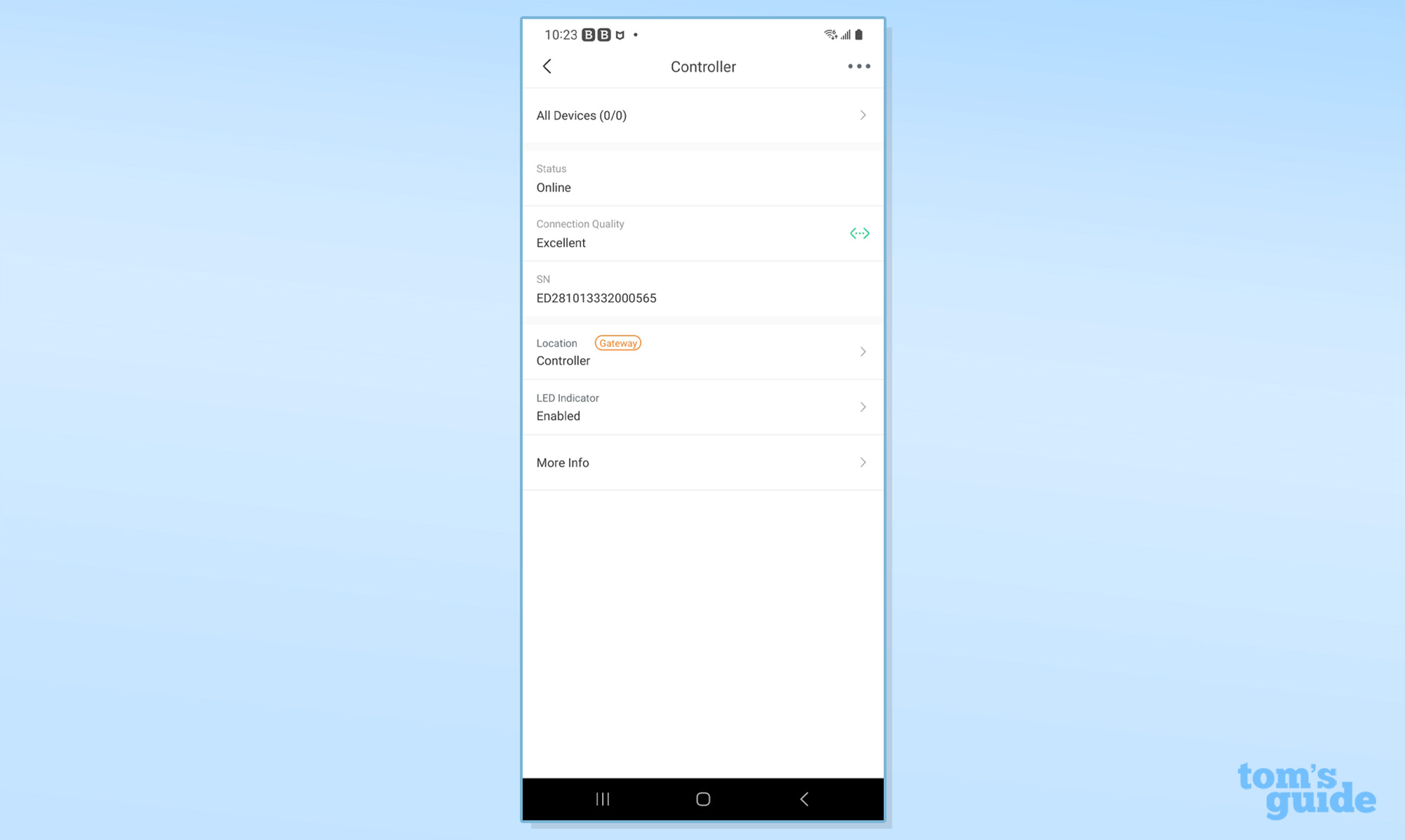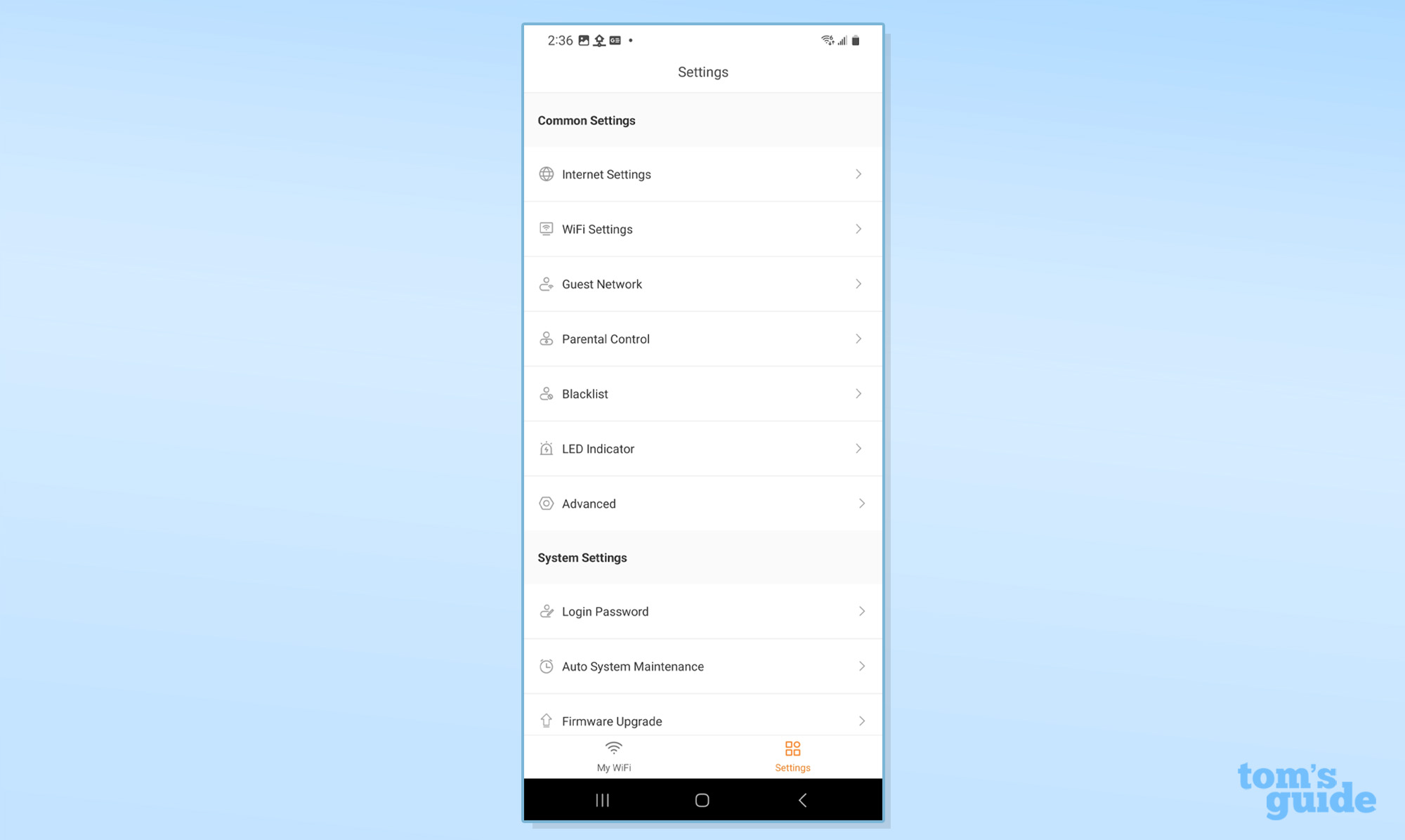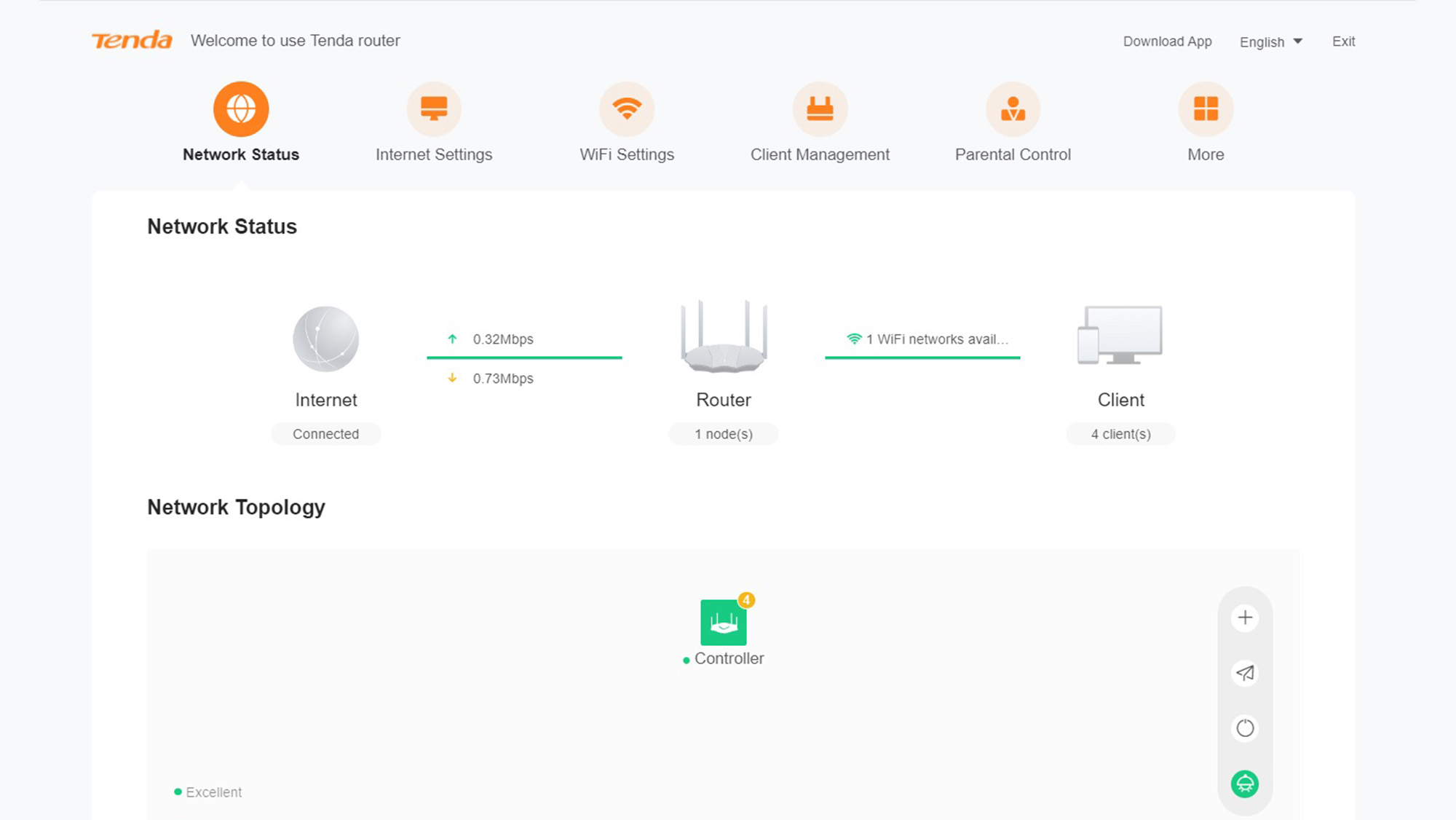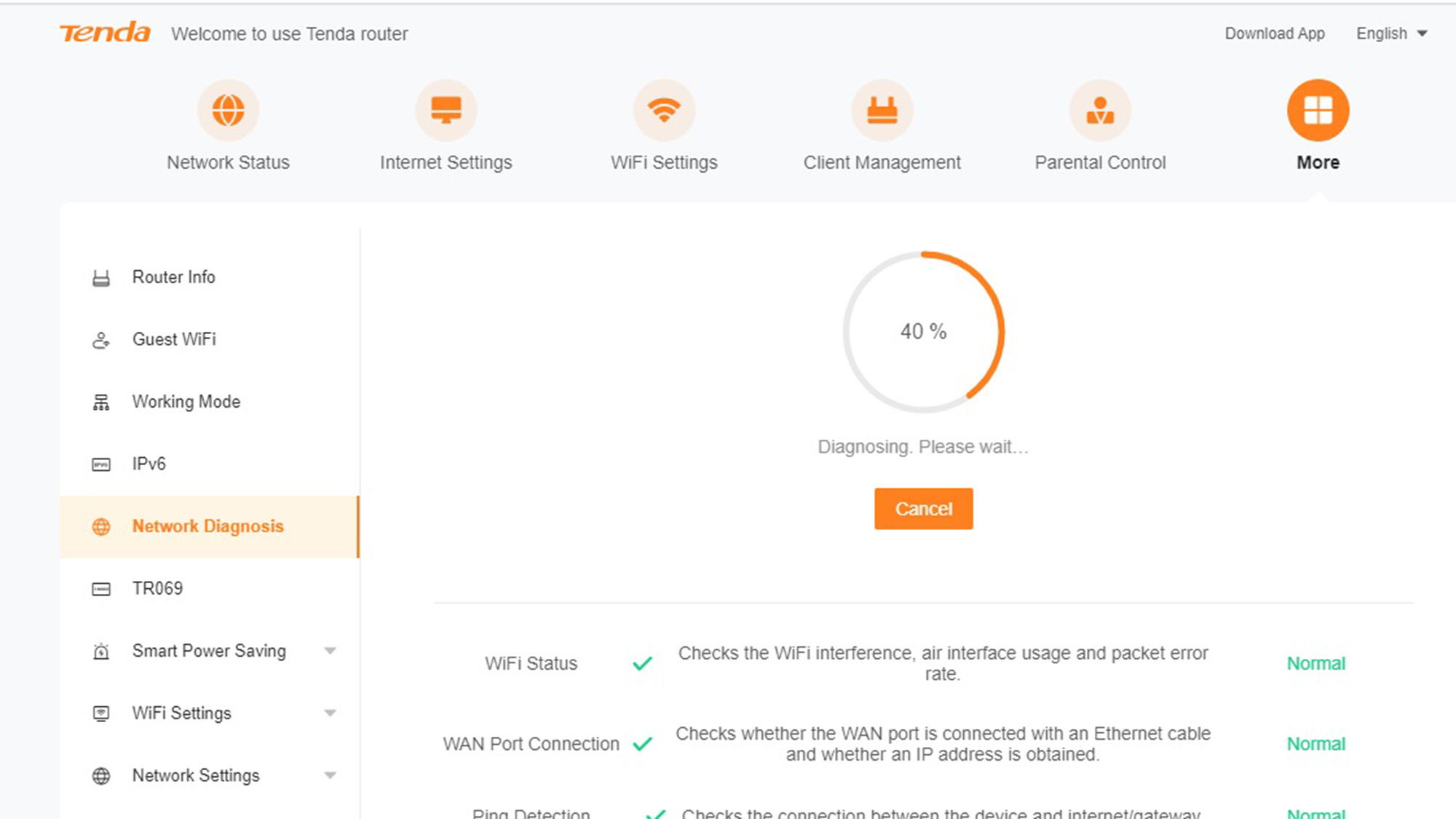Tom's Guide Verdict
One of the least expensive ways to build a Wi-Fi 6E network, the Tenda RX27 Pro includes the ability to move data over the high-speed 6GHz band and has the potential to be the best budget router for mid-distance throughput.
Pros
- +
Diagnostic software
- +
Good mid-distance results
- +
Simple setup and control app
- +
Inexpensive Wi-Fi 6E router
Cons
- -
Uninspiring design
- -
No extra security software
Why you can trust Tom's Guide
Wi-Fi Spec: AXE5700 (802.11AX)
Number of Antennas/Removable: 5/No
Ports: 1 WAN/3 LAN gigabit per second
Processor/Memory/Storage: Quad-core 1.7GHz/256MB/128MB
Wi-Fi chip: Broadcom 6756
Peak 802.11ac performance: 1.047Gbps (at 15 feet)
Range: 95 feet
Size: 10.3 x 7.5 x 2.6 inches
Estimated Annual Electricity Cost: $13.50
With Wi-Fi 7 products coming out fast and furious, there’s an opportunity to outfit a network on the cheap by using a budget Wi-Fi 6E router, like Tenda’s RX27 Pro. Basic and minimalist, this Wi-Fi 6E router may have a nondescript design and cheap plastics, but it features a simple setup and control app as well as an excellent networking diagnostic routine. Capable of surprisingly strong throughput at mid-distances, the RX27 Pro failed to impress close up.
At roughly one-third the price of other Wi-Fi 6E gear yet can go toe-to-toe with the best of them in all regards except for one: it lacks the extra layer of security software that competitors provide but makes up for it with a 3-year warranty.
Our Tenda RX27 Pro review will help you decide if this is one of the best Wi-Fi routers on a budget and whether or not the “Pro” in its name is justified.
Tenda RX27 Pro review: Pricing and Availability
Available online or in physical stores, the Tenda RX27 Pro typically sells for $160. There’s a special deal at Amazon that lowers the price to $125 for Prime members. Add in a $10 coupon and the final price can be as low as $115. That’s about one-third the cost of Netgear’s Nighthawk RAXE500.
Rated by Tenda engineers to be able to cover a 3,000 square foot home, it is one of the least expensive Wi-Fi 6E routers available. If that’s too dear, Tenda’s RX9 router uses Wi-Fi 6, is rated at AX3000 and costs only $75.
Tenda RX27 Pro review: Design
Looking about as commonplace as can be, the Tenda RX27 Pro’s case is made of dull black plastic. It has no texture to it and the most charitable way of describing it is to call it cheap. The only adornment is the chrome Tenda logo.
Engineers and designers cut many corners, including the soft rubber feet that most routers, even budget ones, have. Instead, it has hard plastic feet that might scratch your furniture. Happily, it can be hung from a wall with its mounting inserts underneath.
Get instant access to breaking news, the hottest reviews, great deals and helpful tips.
At 10.3 x 7.5 x 2.6 inches it is among the smallest Wi-Fi 6E routers on the market, and about half the size of the Netgear Nighthawk RAXE500. The RX27 Pro lacks the aggressive look of the RAXE500’s batwing antennas but its five adjustable external antennas are augmented by seven internal Front-End Module (FEM) antennas inside.
The router’s basic black appearance is broken up by a single LED up front. A refreshing change from those that try to overwhelm with lots of different colored lights blinking away. By contrast, the RX27 Pro’s lone light glows green when everything is OK and flashes red when there’s no Internet connection. The light can be turned off or scheduled in the app.
Its design has vents below and in the back to passively move cooling air through the case. Over two weeks of intense use, these vents allowed it to stay cool with the device never getting hotter than 96.1 degrees Fahrenheit.
Built around Broadcom’s 6756 Wi-Fi chip, the tri-band RX27 Pro has a 1.7GHz quad-core ARM-based processor along with 256MB of RAM and 128MB of flash storage space for its firmware and settings. Able to tap into 160MHz data channels, the RX27 Pro has beamforming to customize the stream to the receiving device and MU-MIMO operations to satisfy a large number of connected clients. It moves data over the 2.4GHz band in 3X3 streams as well as 2X2 streams over the 5 and 6GHz bands. The router can work with 200 devices at a time.
It can move up to a theoretical maximum of 5.7Gbps. The 2.4GHz band can handle up to 861Mbps as well as 2.402Gbps over both the 5.0GHz and 6.0GHz bands.
As advanced as it is, the RX27 Pro is filled with compromises to keep the price down. The big one is ignoring the multi-gig revolution currently sweeping home networking. The router makes do with an input WAN and three (not the expected four) downstream LAN ports rated to handle 1Gbps data streams; none can be aggregated for top performance. In other words, it lacks the 2.5-, 5- or 10Gbps ports we’re accustomed to seeing in the newest routers, although the sweet spot for this router is those with sub-1Gbps broadband plans. It lacks a USB port for connecting a networked drive.
The ports in the back have a nearby power connection for the included AC adapter. There’s also a switch for using Wi-Fi Protected Setup to quickly add clients and a recessed reset button to return the router to its factory settings. It has no power button.
Finally, the RX27 Pro not only allows for a scheduled rebooting of the router but can delay it if there’s any significant data traffic at its appointed time, like during a firmware upgrade. There’s also a seven-step diagnostic routine for figuring out what’s wrong with the network which ranges from pinging the Internet to checking on processor and memory hogs.
Tenda RX27 Pro review: Performance
Using the Keysight IxChariot networking benchmark in my 100 year old house and a Wi-Fi 6E-powered Samsung GalaxyBook test notebook, the Tenda RX27 Pro lacked top throughput results at short distances but more than redeemed itself as a reliable performer that did well at mid-range distances. It just missed filling the 3,500 square foot residence.
For example, at 15-feet, the network delivered 1.048Gbps to the GalaxyBook test system over a 6GHz link. This should be more than enough bandwidth for most and about the bandwidth that a 1Gbps cable can provide. Still, it was more than 25% off the throughput of the top performer, the Asus ROG Rapture GT-AX11000. Its output was closer to the Netgear Nighthawk RAXE500’s 1.153Gbps and well ahead of the Linksys Hydra Pro 6E at 772.0Mbps.
| Row 0 - Cell 0 | Tenda RX287 Pro | Asus ROG Rapture GT-AXE11000 | Netgear Nighthawk RAXE500 | Linksys Hydra Pro 6E |
| 15 feet | 1.047Gbps | 1.470Gbps | 1.153Gbps | 772.0Mbps |
| 50 feet | 366.7Mbps | 267.9Mbps | 215.8Mbps | 120.4Mbps |
| 75 feet | 44.8Mbps | 98.3Mbps | 148.6Mbps | 37.0Mbps |
| 90 feet | 14.7Mbps | Offline | 18.9Mbps | Offline |
At 50 feet, the router got down to business, yielding 366.7Mbps, well ahead of more expensive routers, like Asus ROG Rapture GT-AXE11000 (267.9Mbps) and Netgear Nighthawk RAXE500 (215.8Mbps). Its throughput was three-times the 120.4Mbps that the Hydra Pro 6E delivered.
In the 75-foot test, the throughput for the RX27 Pro dropped to 44.8Mbps, just ahead of the Hydra Pro 6E’s 37.0Mbps. It was between half and one third of the bandwidth 98.3Mbps that the ROG Rapture GT-AXE11000 and the 146.6Mbps that the Nighthawk RAXE500’s pushed.
It had a range of 95 feet, at least 10 feet more than either the ROG Rapture GT-AXE11000 or Hydra Pro 6E router but fell short of the RAXE500’s 105-foot range. The RX27 Pro moved 14.7Mbps at 90-feet, plenty for some email and a video and just behind the Nighthawk RAXE500’s 18.9Mbps.
With the test system in a room 25 feet and a wall away from the router, the GalaxyBook test system received 847.5Mbps from the RX27 Pro router. That’s 25% off the Nighthawk RAXE500’s 1.137Gbps.
Over the course of three weeks, the RX27 Pro was great for moving everything from emails and software updates to delivering 4K video and a little gaming. It passed our saturation test, where I used a ThinkPad 470 to play YouTube videos while a Galaxy S21 phone listened to Spotify tunes and an HP Envy desktop PC to watch Twitch gaming streams. All this went on as a MacBook Air moved files onto and off of a networked RAID file server. All the media came through without a glitch, freeze up or noticeable lost frame.
While the RX27 Pro was doing its work, the router used 10.3 watts. It has no idle mode to cut power consumption during idle periods. For a 24/7 always-on usage pattern, the router should cost $13.50 a year to operate, if you pay the national average of 15 cents per kilowatt hour of electricity. That’s a couple of dollars less than the RAXE500’s $15.81 under the same conditions.
Tenda RX27 Pro review: Setup
Getting the Tenda RX27 Pro online took about 15 minutes, but a lot of that was spent waiting for a verification email to arrive with a needed code. Without that inconvenience, it might have gone more quickly and smoothly. I used the Android app and my Samsung Galaxy S20 phone, although there’s also one for iPhones as well as the ability to use a web browser and connected computer to tap into the router’s built-in user interface.
After I plugged everything in, I connected my phone with the router’s default network. It didn’t require a password, making it essential to immediately change the router’s log-in credentials to something more secure.
I agreed to the license and needed to create an account. As previously mentioned, the verification email with the required activation code took more than five minutes to arrive. This slowed the process to a crawl but gave me time to refill my coffee cup. Once everything was back on track, the app found the new router and started its configuration magic.
Next, I changed the network name and passcode and allowed the app to connect the hardware with my account. The setup didn’t allow combining the networks into a single SSID, something I needed to do later.
Tenda RX27 Pro review: Configuration
Unlike many economy routers, the RX27 Pro allows the use of the app, a connected browser or both at once. To start, the app has an uncluttered open design with the My WiFi page showing the number of connected clients at the bottom and a network map on top.
The Controller link leads to the router’s details. In it, there are things that range from serial number and LED status to – another layer down – MAC address, IP address and firmware version.
Inside the Settings tab are places to customize the Internet and Wi-Fi Settings as well as configure the guest network and parental controls. There’re options for rebooting the router and scheduling the LEDs.
Using the connected browser approach yields more options and has a similar look and vibe. The network status page not only has a more detailed LAN map but actual throughput numbers.
Its tabs along the top can take you to all the main operational adjustments, like Internet and parental controls. The WiFi Settings area is where I was able to consolidate the three network names into a single SSID.
Meanwhile, Client Management has all the connected devices listed. There’s more here than info here with the ability to blacklist any and limit their throughput.
Finally, there’s a heavy-duty Network Diagnostics hiding in the More tab. It gives the LAN a workout looking for faults and can help if there’re connection problems.
No surprise, the RX27 Pro lacks fine-tuning options, like RTS Threshold, Fragmentation Length or picking between the long or short Preamble, but few will miss these items. In this age of hackers hiding everywhere, what you will miss is extra security akin to Asus’s AiProtection, TP-Link’s HomeShield or Netgear’s Armor. It can operate as a VPN client or as a Point to Point Tunnelling Protocol (PPTP) server.
The RX27 Pro includes a three year warranty and lifetime support for the product, compared to Netgear’s one-year warranty and just 90 days of included support. Support is skimpy for DIYers with not much more than a phone number and email address. A Quick Start Guide and Manual are available though.
Tenda RX27 Pro review: Verdict
What does $115 buy these days? A pair of sensible shoes or maybe a night out at a fancy restaurant. Well, it’s now enough to get a Wi-Fi 6E network with Tenda’s RX27 Pro router. It has an AXE5700 rating, a nice app and setup procedure as well as a class-leading three-year warranty. Despite having some of the best diagnostic software available, it lacks an extra protective software layer to defend the router and network.
While it didn’t astound with top-speeds close to the client, the RX27 Pro came into its own at the mid-range distances that most home networkers count on to fill a residence with data. It would be a must have system for those with more sedate data needs if it weren’t so plain looking. But maybe that’s the point, allowing the RX27 Pro to hide in plain sight.
Brian Nadel is a freelance writer and editor who specializes in technology reporting and reviewing. He works out of the suburban New York City area and has covered topics from nuclear power plants and Wi-Fi routers to cars and tablets. The former editor-in-chief of Mobile Computing and Communications, Nadel is the recipient of the TransPacific Writing Award.

